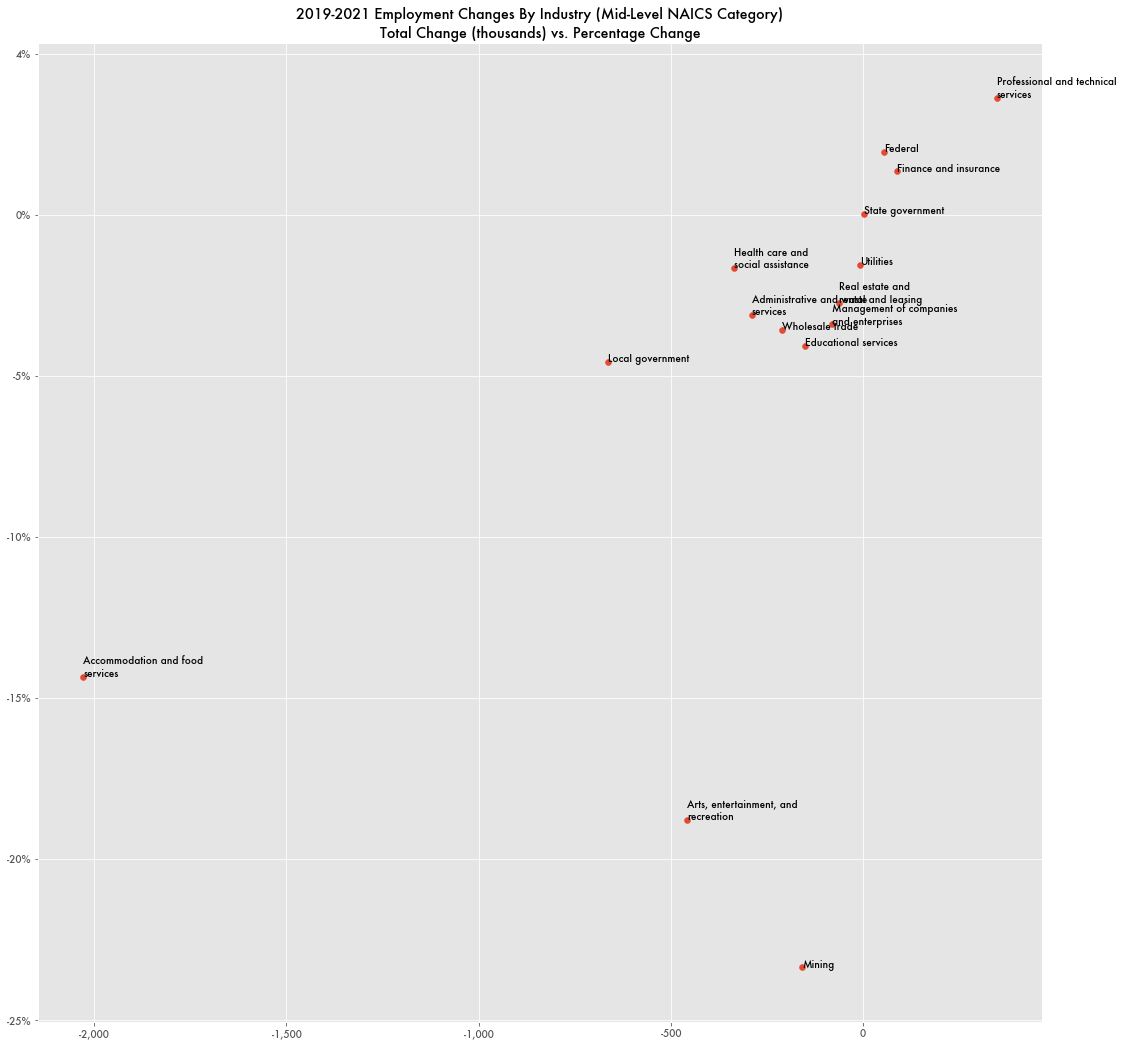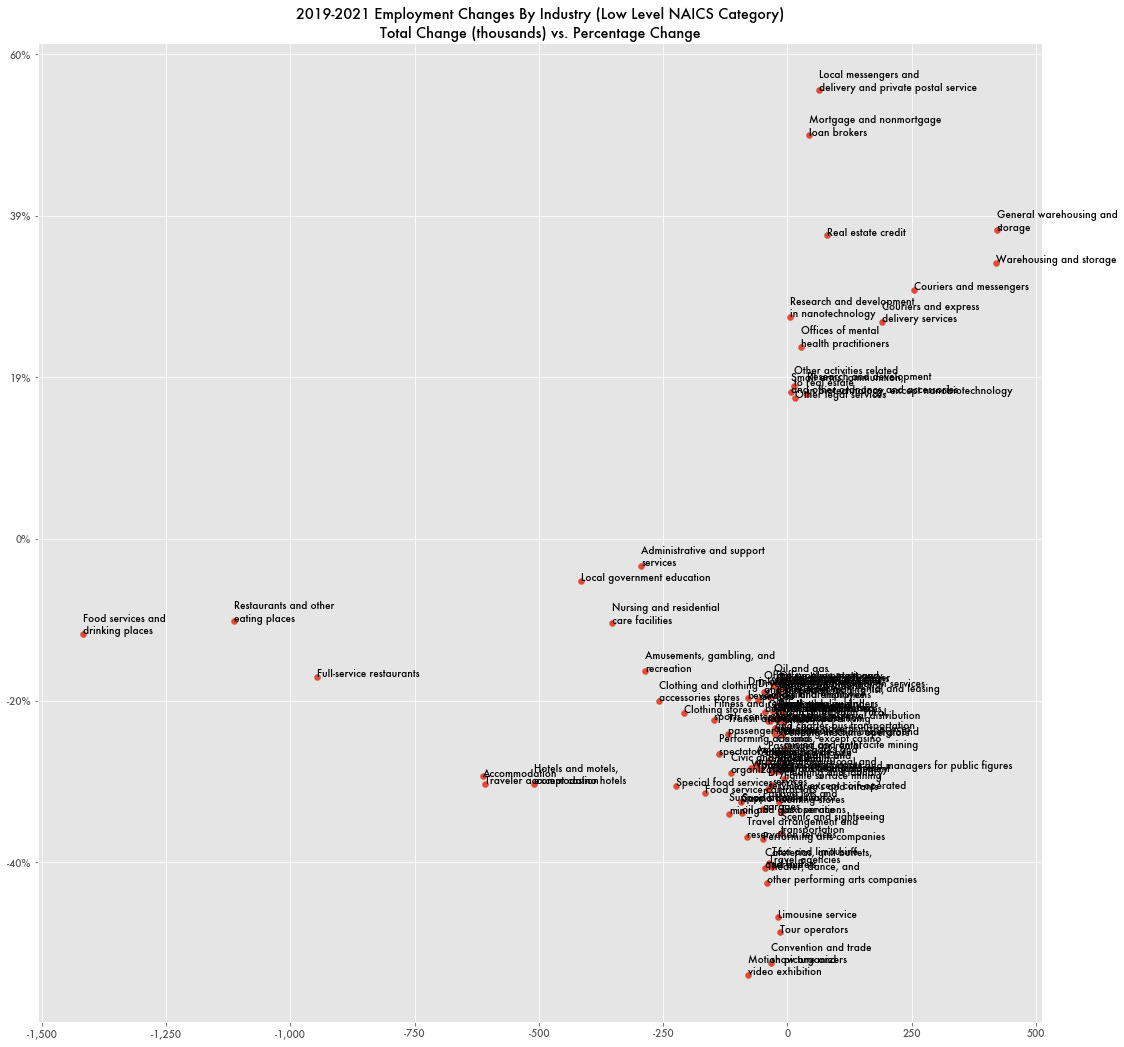Restaurants, Hospitality, and Mining: The Industries Where Employees Left
The pandemic drove a collapse in employment as the economy came to a standstill. As the economy has come back, not all employees have come back and the ones that stayed away are considered part of the "Great Resignation": a mass exodus of workers who were no longer interested in keeping a job.
As a result, the labor force participation rate—the percentage of citizens of working age that are working or looking for work—is still far off what it was pre-pandemic. The labor force participation rate fell at three times the rate of the employment rate—the number of workers actually employed—for those 15-64 based on numbers from the Federal Reserve.
Why those employees from 2019 didn't return in 2021 is not well known, but they mainly came from two industries: leisure/hospitality and mining/logging. Leisure and hospitality comprises both the hotels and tourism that came to a standstill when the economy was closed as well as restaurants, particularly fine dining according to data from the Bureau of Labor Statistics (BLS). Leisure and hospitality saw the largest total drop in employment of around 2.5 million workers, while mining saw the largest percentage drop, 23 percent, as mining does not employ as many workers in total.
Sub-industries that saw substantial employee growth (percentage-wise) included warehouse workers, mortgage brokers, and nanotechnology researchers.
Within leisure and hospitality, industries such as restaurants, hotels/motels/other accommodations, and tour operators also saw large losses. A separate subcategory of arts and entertainment also lost a substantial number percentage-wise (19 percent).
Restaurants and hotels are also one of the largest employers for foreign workers according to data from the Organization for Economic Co-operation and Development (OECD), with almost 21 percent of workers being foreign-born.
Agriculture has an estimated 18 percent foreign-born population, although agricultural employment data is not included in BLS data as it is tracked by the US Department of Agriculture (USDA).
Foreign labor, both legal and illegal, was severely limited during the pandemic because of pandemic restrictions like those on travel, but it’s not completely known to what degree. The Department of Homeland Security (DHS) publishes an annual report of immigration changes, but the report for 2020 has yet to be released. They are regularly released in October of the following year.
The decline in mining employment may not come as a surprise as the industry was already shrinking pre-pandemic and saw the largest job losses in total and percentage-wise since 2012 while every other general industry saw some amount of growth over that time. With the pandemic, the hemorrhaging of mining workers is now happening approximately 10 percentage points faster.
The decline in mining employment goes back decades as the industry has transformed, and coal is used less as a fuel source. Eastern coal states also saw the largest employment declines going back to 2000.






